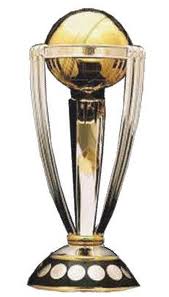What is cricket ?
Cricket is a bat-and-ball game played between two teams of 11 players each on a field at the centre of which is a rectangular 22-yard-long pitch.
Where did cricket originate from ?
No one knows when or where cricket began but there is a body of evidence, much of it circumstantial, that strongly suggests the game was devised.
It is generally believed that cricket survived as a children's game for many centuries before it was increasingly taken up by adults around the beginning of the 17th century.
Possibly cricket was derived from bowls, assuming bowls is the older sport, by the intervention of a batsman trying to stop the ball from reaching its target by hitting it away.
Playing on sheep-grazed land or in clearings, the original implements may have been a matted lump of sheep's wool (or even a stone or a small lump of wood) as the ball; a stick or a crook or another farm tool as the bat;
and a stool or a tree stump or a gate (e.g., a wicket gate) as the wicket.
Forms of cricket
• Test match cricket
It is the longest form of the sport of cricket.
Test matches are played between national representative teams with "Test status", as determined by the International Cricket Council (ICC).
The two teams of 11 players play a four-innings match, which often lasts up to five days. It is generally considered the most complete examination of teams' playing ability and endurance.
The origin of the name Test stems from the long, gruelling match being a "test" of the relative strength of the two sides.
In October 2012, the International Cricket Council recast the playing conditions for Test matches, permitting day/night Test matches.
• One Day International (ODI)
This is a form of limited overs cricket, played between two teams with international status, in which each team faces a fixed number of overs, usually fifty.
The Cricket World Cup is played in this format. One Day International matches are also called Limited Overs Internationals.
When the first three days of the third Test were washed out officials decided to abandon the match and, instead, play a once-off one day game consisting of 40 eight-ball overs per side. Australia won the game by 5 wickets.
ODIs were played in white kits with a red ball. It introduced many of the features of One Day International cricket that are now commonplace, including coloured uniforms,
matches played at night under floodlights with a white ball and dark sight screens.
In the early days of ODI cricket, the number of overs was generally 60 overs per side, and matches were also played with 40, 45 or 55 overs per side, but now it has been uniformly fixed at 50 overs.
• Twenty20
A typical Twenty20 game is completed in about three hours, with each innings lasting around 75-90 minutes and a 10-20 minutes interval.
This is much shorter than previously-existing forms of the game, and is closer to the timespan of other popular team sports.
It was introduced to create a fast-paced form of the game which would be attractive to spectators at the ground and viewers on television.
It consists of 20 overs pers side.
Twenty20 world cup history
| Year |
Host |
Final venue |
Winner |
Runner-up |
| 2007 |
South Africa |
Johannesburg |
India |
Pakistan |
| 2009 |
England |
London |
Pakistan |
Sri Lanka |
2010 |
West Indies |
Bridgetown |
England |
Australia |
2012 |
Sri Lanka |
Colombo |
West Indies |
Sri Lanka |
2014 |
Bangladesh |
Dhaka |
Sri Lanka |
India |

World Cup Winners (ODI)
• Australia: 5 times times winners
• India: 2 times winners
• West Indies : 2 times winners
• Pakistan: 1 time winner
• Sri Lanka: 1 time winner